What is Old Tjikko - the Oldest Living Tree in the World - Nearly 9,600 Years Old
♦ Top 10 Oldest Buildings In The World - The First Buildings
♦ Top 7 Oldest Pyramids In The World - The First Pyramids
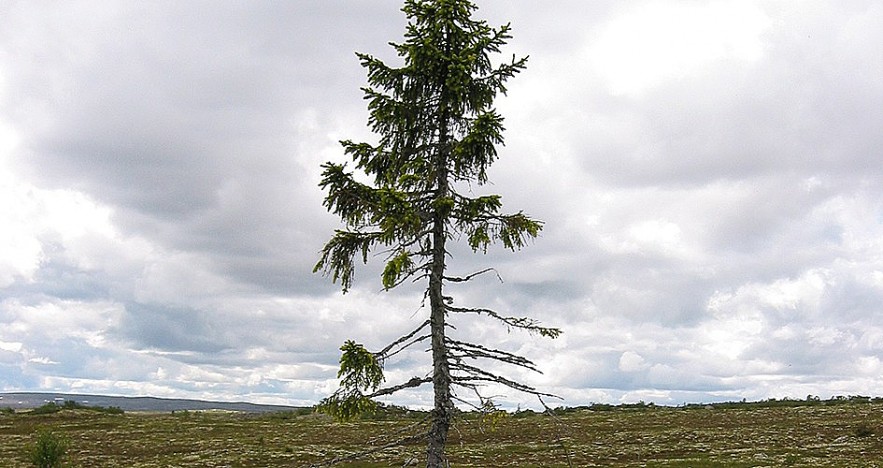 |
| Old Tjikko - The world's oldest tree |
What is the Oldest Living Tree in the World
There are 3 to 5 old trees vying for the title of the longest living tree on the planet.
In addition to Tjikko, the world has many incredibly ancient trees, such as the nearly 5,000-year-old Methuselah pine tree in California (USA).
Or Pando – a forest in Utah (USA) that grows from a single tree, estimated to be 80,000-100,000 years old.
However, as of 2023, most scientists recognize the almost 9,600-year-old Swedish conifer as the oldest living tree in the world.
There is a 9,565 year old Norwegian Spruce on the mountain in Sweden. The tree named Old Tjikko as it is known, was discovered when researchers examined the tree line in the mountains. The spruce is a clone and the observable part which is above ground is a few hundred years old.
The tree is located on Fulufjället Mountain at the Dalarna province in Sweden.
Kullman, a professor of physical geography at Ume University of Sweden, found the tree in 2004. Carbon-14 dating was used to assess the age of the tree with nearly 9,600 year old. Old Tjikko sprouted around 7550 BC, making it older than written history.
How do Trees Live for Thousands of Years?
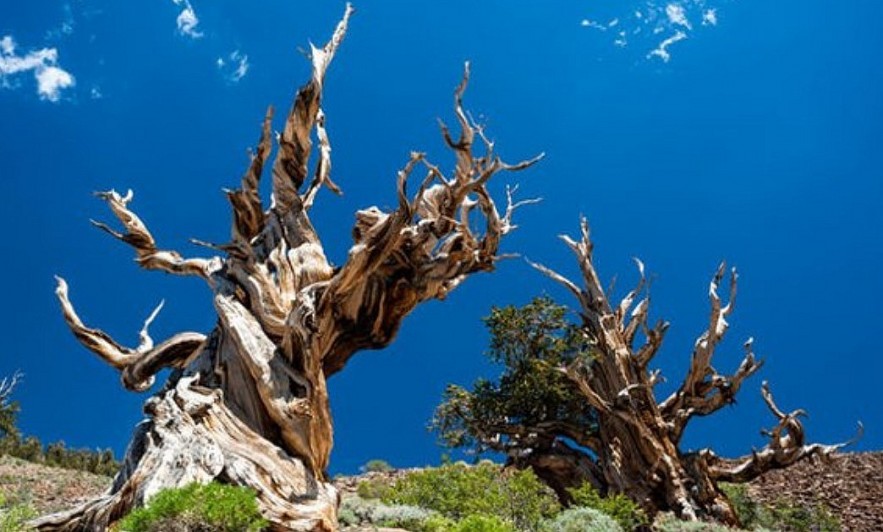 |
| Old Tjikko - The roots have survived by vegetative reproduction (the stem dies but the roots are alive and sprouting new ones) and the rooting of the branches when they touch the ground. |
A clue that the climate is changing is the ability of the trees to grow higher and higher up the mountain.
Old Tjikko has endured throughout the ages thanks to the ability of spruces to reproduce by developing new roots from the branches. The spruce has stood upright during warmer seasons, but it has also survived as a shrub during colder seasons, shielded by the snow.
"During the ice age, sea level was 120 meters lower than it is today, and much of what is now the North Sea between England and Norway was then forest," Prof. Kullman said.
With a height of only about 4.8m, the Old Tjikko tree is quite small compared to its 25m relatives in the mountains of Fulufjället, Sweden.
However, this amazing conifer is recognized as the world's oldest single clonal tree.
Tjikko germinated about 9,558 years ago, when Great Britain was still linked to Europe by an ice sheet, and glaciers were just beginning to recede across Scandinavia.
The tree lived anonymously until 2004, when it was discovered by geologist Leif Kullman and named Tjikko (after his deceased dog).
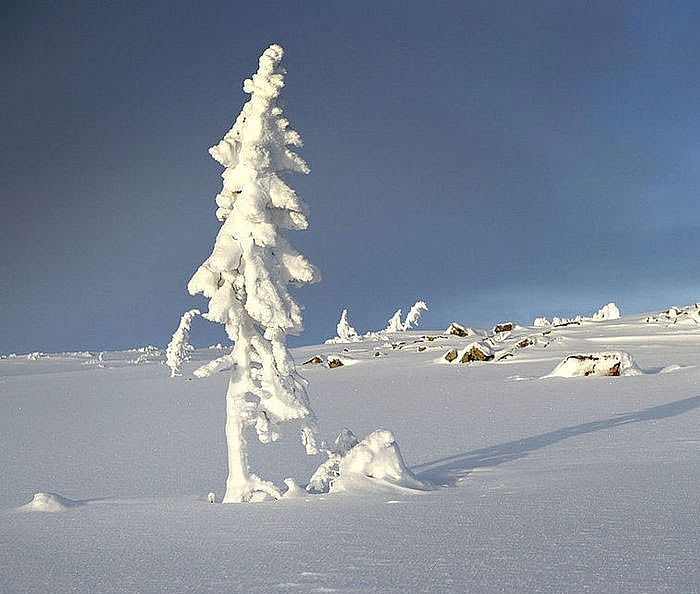 |
| Old Tjikko is still alive despite being frozen |
The scientists used the carbon method to determine the age of the tree's root system, which is thousands of years older than the trunk above the ground.
The trunk of the tree is actually only a few hundred years old, but the root system has survived by vegetative reproduction (the stem dies but the roots are alive and sprouting new ones) and the rooting of the branches when touching the ground.
The wind and low temperatures made the Old Tjikko tree look like a bonsai. Big trees can't live this long.
Due to extreme mountain weather, Tjikko exists as a shrub and has only reached its current height in the past century.
| Since the terrain would have been too severe and frigid for the tree to have grown organically even 10,000 years ago, Professor Kullman thought it was plausible that humans had imported the tree to the region. Norway spruce trees could not have grown in Sweden at that time due to the global ice age that had engulfed the country. |
The Oldest Root System in the World, Not Oldest Tree?
However, there is significant debate regarding Old Tjikko's claim to be the world's oldest tree. It is a clonal tree, which means that over the span of thousands of years, it has produced new trunk, roots, and branches even though its root system is the oldest one ever found.
The trunk is therefore not more than a few hundred years old. Even after the tree trunk dies, the root system is still functional and can grow a new tree trunk to take its place in a process known as vegetative cloning. Before dying and the cycle starting over, each trunk can live for up to 600 years.
The tree's branches are also being pushed downward by the heavy snow, finally forcing them into the earth. The branches then burrow underground in a process known as layering, whereby new roots emerge from the old.
Some contend that Old Tjikko is not the oldest living tree in the world because the visible portion of the tree is not as old as the roots. The bristlecone pine tree dubbed Methuselah, which is in California's White Mountains, is 4,768 years old and is the next-oldest challenger for the title of oldest tree that is not dependent on vegetal cloning.
More Images: Old Tjikko Survive All Extreme Weather Conditions
 |
| Winds and low temperatures made Old Tjikko “like a bonsai tree |
 |
 |
| The trunk is only a few hundred years old, but the roots survive for thousands of years |
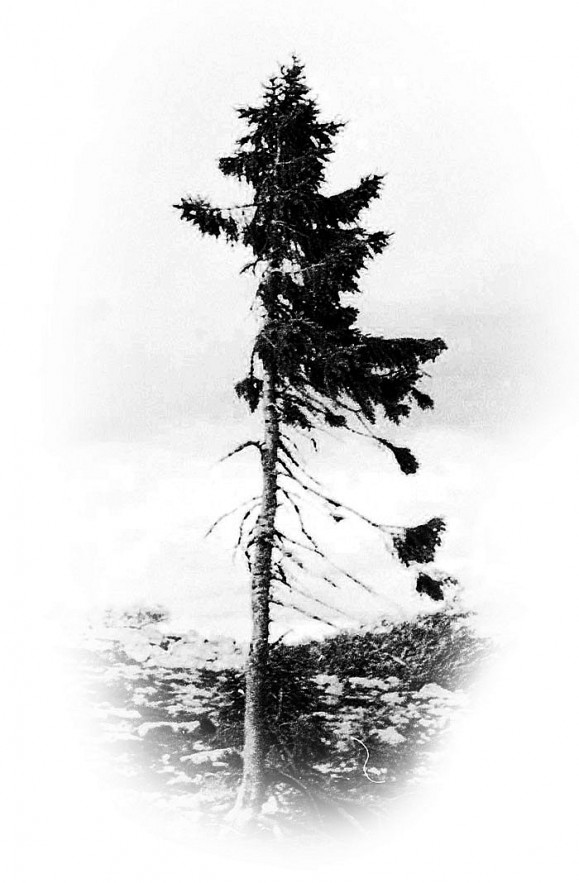 |
| After the snow and ice season, it's green again |
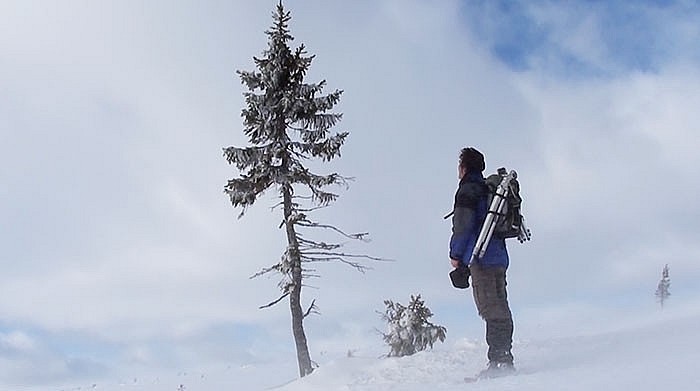 |
| Many people want to see the oldest living tree in the world with their own eyes |
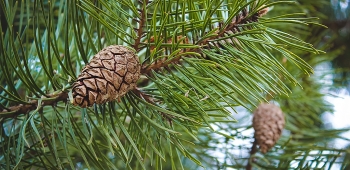 How to Plant and Care Pine Trees How to Plant and Care Pine Trees Pine trees are evergreen trees that come in many varieties. You can plant a pine tree from a seed or from a sapling. Let’s take ... |
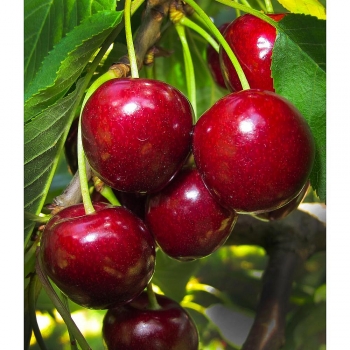 Useful TIPS for Growing Fruit Trees at Home Useful TIPS for Growing Fruit Trees at Home Caring for fruit trees can be extremely satisfying. Fresh fruit is not just healthy and nutritious. If you are looking for useful tips to grow ... |
 Why Do Tree Leaves Change Color? Which Leads to The Change? Why Do Tree Leaves Change Color? Which Leads to The Change? Albert Camus once said, "Autumn is a second spring when every leaf is a flower." Why tree leaves change color in Autumn, check out the ... |























